Pest Library
Over 50 Years' Experience
Same-Day Appointments
State-Of-The-Art Techniques
Learn More About the Various Pests That Invade homes and businesses
The more you know about the pests that are invading your home the easier it is to eliminate the problem. Get in touch with Pest Pro if you have any questions about pests in your home or business. We'll respond immediately during business hours.
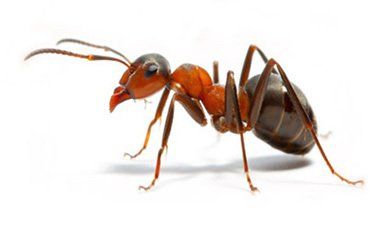
We Understand Ants
- Entry: Ants can enter through even the tiniest cracks, seeking water and sweet or greasy food substances in the kitchen pantry or storeroom areas.
- Scent trails: Ants leave an invisible chemical trail that contains pheromones for others to follow once they locate the food source.
- Nest locations: They can nest about anywhere in and around your house; in lawns, walls, stumps, even under foundations.
- Colony size: Colonies can number up to 300,000 to 500,000, and whole colonies can uproot and relocate quickly when threatened.
- Colony Lifetime: A colony can live a relatively long lifetime. Worker ants may live seven years, and the queen may live as long as 15 years.
- Do-it-yourself ineffectiveness: Most do-it-yourself ant control approaches kill only the ants you see. Some truly effective treatments can penetrate and destroy nests to help prevent these pests from returning. Also, home remedies don’t account for the fact that different kinds of ant infestations require different treatments.
Professional Treatment: Ant control is a multi-step process and in some situations will require multiple treatments to properly target the ant colony. Below is a general outline of our multi-step Ant Control process:
- Proper identification – This is a critical step necessary to target the most optimal control techniques, which can include, insecticide baits, void injection treatments, and or the use of IGRs (insect growth regulators).
- Location of the nest(s) – Locating the next is crucial or at least determine if the ants are coming from inside, outside or under a structure. Following the trail of foraging workers can provide many answers for our technicians when determining products usage and placement.
- Baiting – Often the most effective control method, in the case of Pharaoh ants the only method.
- Perimeter barrier treatment – A perimeter treatment in some situations is effective to knock down the population of the foraging ants but the best when combined with our baiting program to attack the colony. Our highly trained technicians will make a residual application to the perimeter wall voids, cracks and crevices.
- Non-chemical control methods – Basic sanitation in removing food that ants will forage, removal of plants, exclusion work (caulking), trimming branches or shrubs, use of window screens and checking utility lines. Contact us today to begin your inspection and treatment plans.
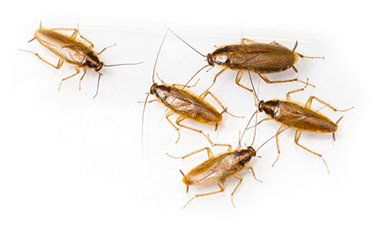
Learn the Facts About Cockroaches
The cockroach is one of the most common home invaders in our community. These nasty bugs are particularly hazardous to your health due to the fact they can carry disease and prefer to hide in dark damp areas such as sewer drains, waste disposal and even your kitchen.
Learn more about the cockroach and how we treat for them:
- Entry: Cockroaches can enter your apartment, home, or office in a variety of different ways, from the outside through cracks and crevices, vents, sewer, drainpipes and open doors/windows. We even bring them in on products like grocery bags, cardboard boxes, purses, bags and even on your person!
- Ideal environment: Your home is an ideal breeding ground for certain pest species of cockroaches. With plenty of food, warmth, water and nesting sites, they can remain active all year round.
- Reproduction: Cockroaches reproduce quickly. For every one you see there can be many, many more hiding and multiplying behind your walls.
- Evasiveness: Because cockroaches typically are nocturnal, if you’ve seen one, you probably haven’t seen them all. The few cockroaches you see by day could mean they were likely forced out by overcrowding; a possible sign of severe infestation.
- Allergies/Asthma: The debris created by cast-off cockroach skins, dead bodies and droppings can aggravate allergies, especially in children and sensitive individuals.
- Do-it-yourself ineffectiveness: Cockroaches are better at hiding than you are at finding them, and their eggs are naturally protected from many over-the-counter insecticides. Without special equipment, materials and know-how, cockroach control can be a losing battle.
- Professional Treatment: Cockroach control is a multi-step process and in some situations, depending on the severity, may require multiple treatments for eradication.
Below is a general outline of our multi-step Cockroach Control process:
- Prevention: Inspect all incoming items such as boxes and make sure the area is in good physical condition to reduce entry points.
- Sanitation: In general good sanitation practices help reduce insect population by removing places available for harborage, food and water.
- Inspection: A thorough inspection of the area to determine, species, infestation locations and treatment method.
- Treatment: We can utilize a variety of treatment applications from traditional pesticides to non-pesticide. The combination of all these control methods with the proper pesticide application yields the best results. Residual baits, IGRs (insect growth regulators), liquids, aerosols, crack and crevice treatment with a microencapsulated product. Our highly trained technicians will determine the best treatment protocol for the specific job.
- Maintenance Service / Follow-up: Having a regularly scheduled maintenance plan to inspect and evaluate on a regular basis before an infestation develops.
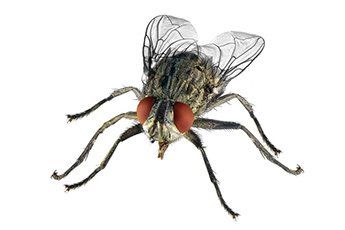
Keep Flies Away From Your Property
We've all had to deal with flies in our lifetimes but did you know that the fly is known to carry up to 100 harmful pathogens including Salmonella, Staphylococcus, E. Coli and Shigella? These pathogens can make both humans and animals very sick.
Here are a few facts about flies that will help with your treatment of them:
- Depending on the species, the life expectancy of a fly is eight days to two months or, in some cases, up to a year.
- Flies belong to the order Diptera, meaning two wings. There are more than 16,000 species of flies in North America.
- Flies plague every part of the world except the polar ice caps.
- One pair of flies can produce more than 1 million offspring through their offspring's offspring in a matter of weeks.
- Millions of microorganisms may flourish in a single fly’s gut, while a half-billion more swarm over its body and legs.
- Flies spread diseases readily because they move quickly from rotting, disease-laden garbage to exposed human foods and utensils.
- Because they only have two wings, flies land often and therefore can deposit thousands of bacteria each time they land.
- U.S. Department of Agriculture sources reveal that flies contaminate or destroy $10 billion worth of agricultural products annually.
- Every time a fly lands, it sloughs off thousands of microbes. If a fly lands on food or utensils, customers may ingest germs that can trigger serious illnesses such as diarrhea, food poisoning, meningitis and bloodstream infections.
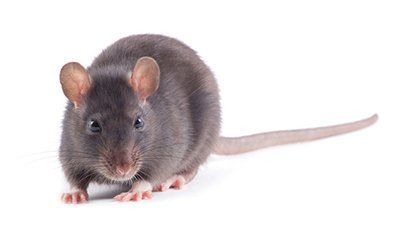
Do You Have a Potential Rodent Problem?
The type of rodent in your home has unique characteristics that make it difficult to control. If you suspect you have an infestation on your property read more about these pests:
Rats
Instincts: Rats are instinctively wary of things new to their environment, including rat control measures such as traps and bait, and colonize in attics, burrows, under concrete and porches, in wall voids and other hard-to-reach places.
Disease: Rats can harbor and transmit a number of serious diseases. They can also introduce disease-carrying parasites such as fleas and ticks into your home.
Mice
Access: They invade your home seeking food, water and warmth.
Contamination: Each mouse can contaminate much more food than it eats.
Rodent Facts
Rodents are warm-blooded mammals that, like humans, can be found throughout the world. They have oversized front teeth for gnawing and check teeth, which are adapted for chewing. Rodents chew on a variety of items available to them and cause great damage in and around homes.
Rodents tend to be rapid breeders. Some species breed year-round, and populations are maintained through constant reproduction. Because of the rodents’ body plan, they are capable of squeezing through spaces that appear to be much too small for them. All such holes should be sealed to prevent entry and reentry of rodents. A pest control professional should be contacted for assistance.
Rats and mice are both extremely destructive within agricultural communities. A number of species feed on seeds and grains. The feces and urine of some rodents may contaminate surfaces with which they come into contact.
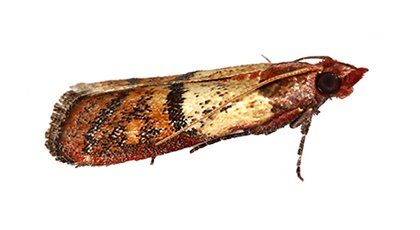
Learn More About Moths
Appearance
Moths typically have two pairs of wings covered in scales. They have a coiled proboscis and large compound eyes. Moths vary dramatically in appearance and size depending on the species. Some are massive and others tiny. Certain species of moths are brilliant with metallic colors while others are drab in browns or grey. Most indoor infesting moths are smaller than 2 cm wingspan and often are shades of grey or brown to reddish-brown.
Signs of a Moth Infestation
Moth signs depend greatly on the species. Indoors, moths are detected by the adults as they fly about the room or rest on surfaces. Fabric-feeding moths are detected when feeding damage to fabrics is discovered. Some will also leave webbing, cocoons and even droppings as evidence of their activity. Stored product moths may leave behind damaged food items, webbing and droppings as well. Some moths will leave their food source when it's time to pupate. The pupae may be seen in corners of cabinets, drawers or walls.
We have treatment plans available customized for your unique pest problem contact us today.
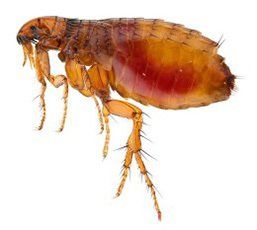
Keep Fleas From Biting You and Your Pet
Have fleas hitched a ride on one of your pets? There are several signs that can indicate a flea problem. The most common one is pets that repeatedly scratch or groom themselves more than normal. This is due to the pest biting your pet leaving an itchy mark behind. Flea feces (also known as flea dirt) looks like coarse ground black pepper and can be seen in pet beds, rugs and areas where your pet spends their time. If you notice any of these issues please contact us today to discuss your treatment options.
Know your flea facts:
Appearance
Adults small, wingless, about 2.5 mm long. Covered in tiny spines with piercing mouthparts.
Behavior, Diet & Habits
Adults are parasites that draw blood from a host. Larvae feed on organic debris, particularly the feces of adult fleas, which contain undigested blood.
Reproduction
Eggs are not attached to the host. Eggs will hatch on the ground, in rugs, carpet, bedding, upholstery or cracks in the floor. Most hatch within two days.
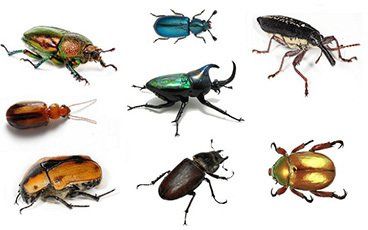
Facts, Identification, and Control of Beetles
Beetles belong to the insect order Coleoptera. This is the largest order of insects. There are more than a quarter-million species of beetles in the world. In North America, scientists have identified more than 25,000 beetle species.
Appearance
Sometimes people mistake cockroaches for beetles. If the beetle is an adult, it can usually be identified by looking at the wings.
The front wings are called elytra. These front wings are often very hard and appear more like a shell than wings. The beetle folds the front wings so they cover the back wings. Most adult beetles seem to have a line down their back where the two front wings meet. Beetles come in many shapes, sizes and colors. Some, like the click beetles, are long and slender. Some beetles like lady beetles and June beetles (also known as June bugs) have an oval or rounded shape. There are even beetles that resemble spiders.
Some Types of Beetles include:
American Spider Beetles
American spider beetles are shiny and reddish-brown to almost black. When viewed from above, they resemble a spider.
Cigarette Beetles
Cigarette beetles are often light brown. These beetles fly and can “play dead” for a few seconds if they are disturbed.
Dried Fruit Beetles
Dried fruit beetles are small oval black insects. They have two amber-colored spots on their wings, and their legs and antennae are often reddish or amber.
Drugstore Beetles
Drugstore beetles are small, brown and oval-shaped pests that are typically about 2 to 3.5 mm long. They have been known to infest many household items such as cereal, spices, books, leather and more.
Flour Beetles
Flour beetles are about 3 to 4 mm long and are reddish-brown. They are common in homes and grocery stores and are often found in flour and cereal products.
Foreign Grain Beetles
Foreign grain beetles are reddish-brown. These beetles are often found in homes and businesses that have moisture or fungus problems.
Larder Beetles
Larder beetles are usually black and have yellow bands across their wing covers. There are also several dark spots in the yellow area.
Plaster beetles
Plaster beetles are very small and less than 1 to 3 mm long. They range in color from yellowish-brown, to reddish-brown, to almost black.
Sawtooth Grain Beetles
Sawtooth grain beetles have flat bodies and are about 2.5 to 3 mm long. They have six tiny projections on each side, just behind the head.
We have a treatment plan that can work for you. Contact us today!
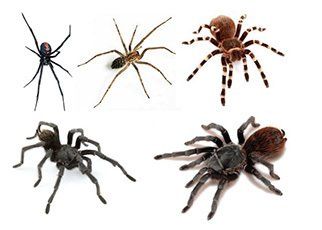



Share On: